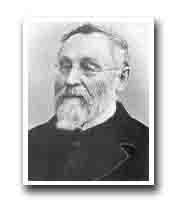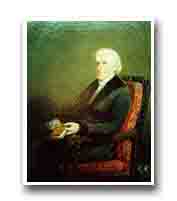 Adolf zur Lippe (1832-1890) was a prominent German-American homeopath who made significant contributions to the development and practice of homeopathy in the United States.
Adolf zur Lippe (1832-1890) was a prominent German-American homeopath who made significant contributions to the development and practice of homeopathy in the United States.
He was born in Detmold, Germany and received his medical degree from the University of Berlin. After practicing homeopathy in Europe for several years, he emigrated to the United States in 1865 and settled in Philadelphia, where he established a successful medical practice.
Zur Lippe was known for his extensive knowledge of homeopathic remedies and his skill in prescribing remedies for his patients. He was also a prolific writer and author of several influential books, including “Keynotes of the Homoeopathic Materia Medica”, “Repertory of the Symptoms of Rheumatism, Sciatica, etc.” and “Materia Medica”.
A
- Aconitum napellus
- Aethusa cynapium.
- Agaricus muscarius.
- Agnus castus (Vite).
- Allium cepa.
- Aloe.
- Alumina.
- Ambra grisea.
- Ammonium carbonicum.
- Ammonium muriaticum.
- Anacardium orientale.
- Angustura.
- Antimonium crudum.
- Apis mellifica.
- Argentum metallicum.
- Argentum nitricum.
- Arnica montana.
- Arum triphyllum.
- Asarum europaeum.
- Asa foetida (Assafoetida).
- Aurum foliatum.
B
C
- Cactus grandiflorus.
- Cadmium sulphuricum.
- Caladium seguinum.
- Calcarea carbonica.
- Calcarea carbonica.
- Calendula officinalis.
- Calendula officinalis.
- Camphor.
- Cannabis sativa.
- Cantharides.
- Capsicum annuum.
- Carbo animalis.
- Carbo vegetabilis.
- Cascarilla.
- Castor equorum.
- Causticum.
- Chamomilla vulgaris.
- Chelidonium majus.
- Chenopodium (Chenopodii glauci Aphis).
- China (Cinchona officinalis).
- Cicuta virosa.
- Cimex lectularius.
- Cina (Semen santonici).
- Cinnabaris.
- Cistus canadensis.
- Clematis erecta.
- Cocculus (Menispermum cocculus).
- Coccus cacti.
- Cochlearia armoracia.
- Coffea cruda.
- Colchicum autumnale.
- Conium maculatum.
- Copaivae balsamum.
- Corallium rubrum.
- Creosotum.
- Crocus sativus.
- Croton tiglium.
- Cubebs (Cubebae).
- Cuprum.
- Cyclamen europaeum.
D
E
G
H
K
L
M
- Magnesia carbonica.
- Magnesia muriatica.
- Magnesia sulphurica.
- Manganum aceticum.
- Marum verum teucrium.
- Menyanthes trifoliata.
- Mephitis putorius.
- Mercurialis perennis.
- Mercurius proto-iodatus (Mercurius proto-jodatus).
- Mercurius sublimatus.
- Mercurius sulphuricus (Turpethum).
- Mercurius vivus.
- Mezereum (Daphne mezereum).
- Millefolium (Achillea millefolium).
- Moschus.
- Murex purpurea.
- Muriatic acid (Muriaticum acidum).
N
O
P
R
S
- Sabadilla (Veratrum sabadilla).
- Sabina (Juniperus sabadilla).
- Sambucus nigra.
- Sanguinaria canadensis.
- Sarsaparilla.
- Scilla maritima (Squilla).
- Secale cornutum.
- Selenium.
- Senega (Polygala).
- Senna.
- Sepia officinalis.
- Silicea.
- Spigelia anthelmintica (Spigelia anthelmia).
- Spongia tosta.
- Stannum.
- Staphysagria (Delphinum staphysagria).
- Stramonium (Datura stramonium).
- Strontia carbonica.
- Strontia carbonica.
- Sulphuric acid (Sulphuricum acidum).
- Sulphur.
- Symphytum officinale.
T
- Tabacum (Nicotiana tabacum).
- Taraxacum officinale (Leontodon taraxacum).
- Tartarus stibiatus (Tartarus emeticus) (Tartarus stibiatum).
- Tellurium.
- Terebinthina (Oleum).
- Thea sinensis.
- Theridion curassavicum.
- Thlaspi bursa pastoris.
- Thrombidium muscae domesticae.
- Thuja occidentalis (Thuya occidentalis).
- Tilia europaea.
V
Zur Lippe was highly regarded by his contemporaries in the homeopathic community and played an important role in the growth and development of homeopathy in the United States. He was also instrumental in the establishment of the Hahnemann College of Philadelphia, which was one of the first homeopathic medical schools in the country.
Today, Adolf zur Lippe is remembered as one of the most important figures in the history of homeopathy in the United States, and his contributions to the field continue to be studied and celebrated by practitioners and students of homeopathy.
“Materia Medica” by Adolf zur Lippe is a classic text in the field of homeopathy. It was first published in 1870 and has since become a valuable resource for practitioners of homeopathy.
The book is a comprehensive materia medica, which is a type of reference book that lists and describes the various substances used in homeopathy. It includes detailed descriptions of the physical and mental symptoms associated with each substance, as well as its traditional uses in homeopathic practice.
Adolf zur Lippe was a well-respected homeopathic physician who practiced in the United States in the late 19th century. He was known for his extensive knowledge of homeopathic remedies and his ability to accurately prescribe remedies for his patients.
“Materia Medica” by Adolf zur Lippe is still widely read and studied today by homeopaths and homeopathy students around the world. While some of the information in the book may be considered outdated by modern standards, it remains an important resource for those interested in the history and development of homeopathy.


